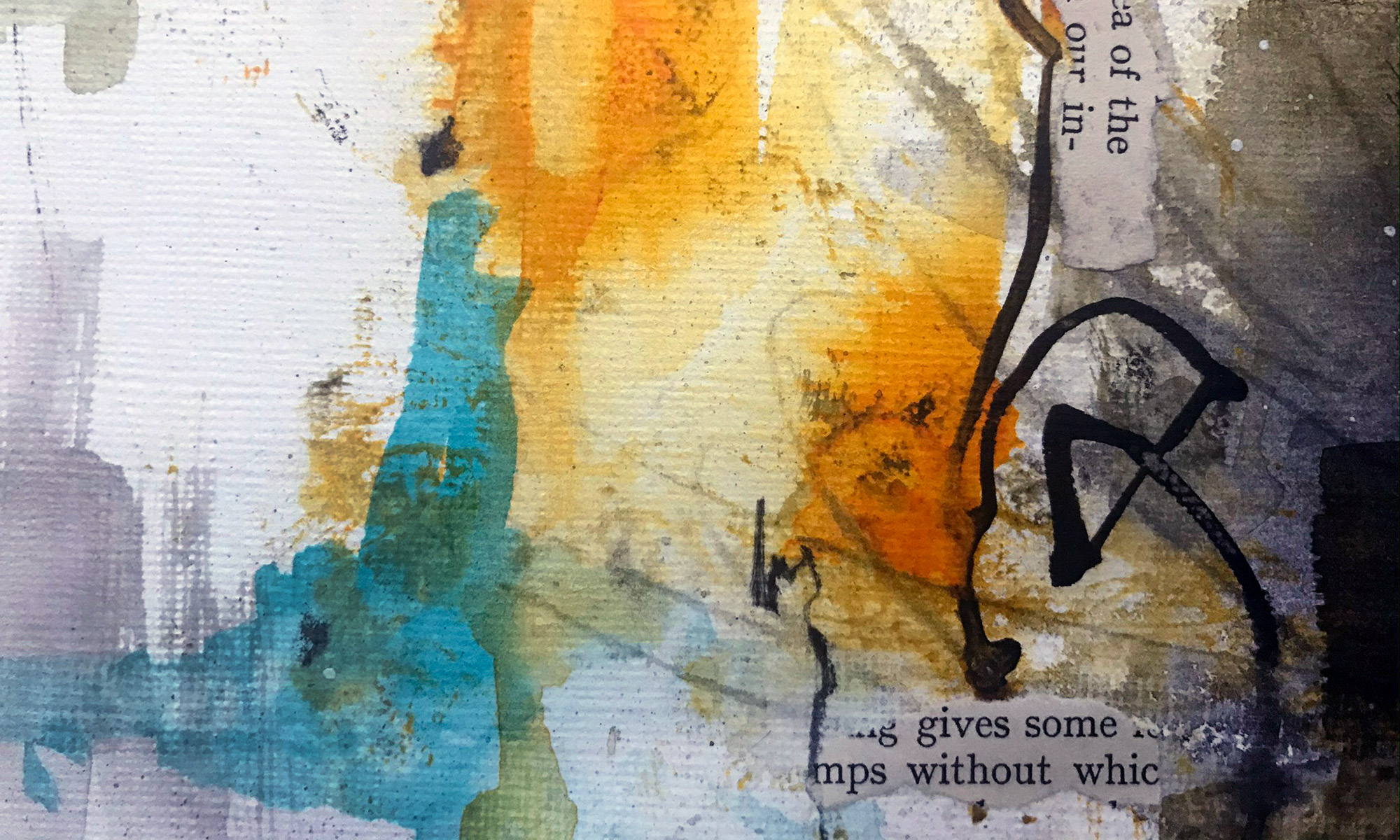I’d been given a set of old encyclopedia volumes to use for collage, as altered books or even to recycle as handmade paper. I decided I’d give handmade paper-making a go.

I was intrigued as I’d been told that due to the age of the books, and the way they had been printed, that the letters were likely to stay intact rather than blend into a mushy grey (which digitally printed papers are more likely to do).

So I started by tearing a few pages out of the books and ripped these into smaller pieces of paper. I left them to soak in a bowl of water for an hour or so before using an old kitchen stick blender (no longer used for food!) and blended the paper into a pulp.

I experimented with a few different types of mesh for creating the sheets of paper. Then after watching a few online videos I found that car bodywork repair mesh worked brilliantly!
So I dipped the mesh into the watery/pulp and pulled it out, this gave me a layer of pulp on the mesh (the amount of water in the pulp affects how thick the paper will be: less water = thicker paper). I then needed to press out as much liquid as I could. Once I’d done this I flipped the mesh over and released the sheet of pulp onto a Jay cloth. I added a second Jay cloth on top to create a ‘sandwich’ and then repeated the process.

The process was really successful (once I got the hang of it), and I was able to make quite thin sheets of paper. It was easy to build up a ‘sandwich’ of 10-20 sheets (this will depend on how much pulp you’ve made). I also like rough edges, so I didn’t worry about giving the paper straight edges, but this could be done by placing a frame onto the mesh before pulling out the pulp.

I really liked how the letters were visible on the paper. The level of detail in the lettering is affected by how long the paper is blended for. The less time spent blending = more definition in the lettering.
The next step now is to try blending different types of paper (basically I’ll be rummaging through my recycling paper bin for junk mail and packaging), this will hopefully add more colour and images to the paper. Plus I’d like to add seeds and petals and…the list goes on!





























